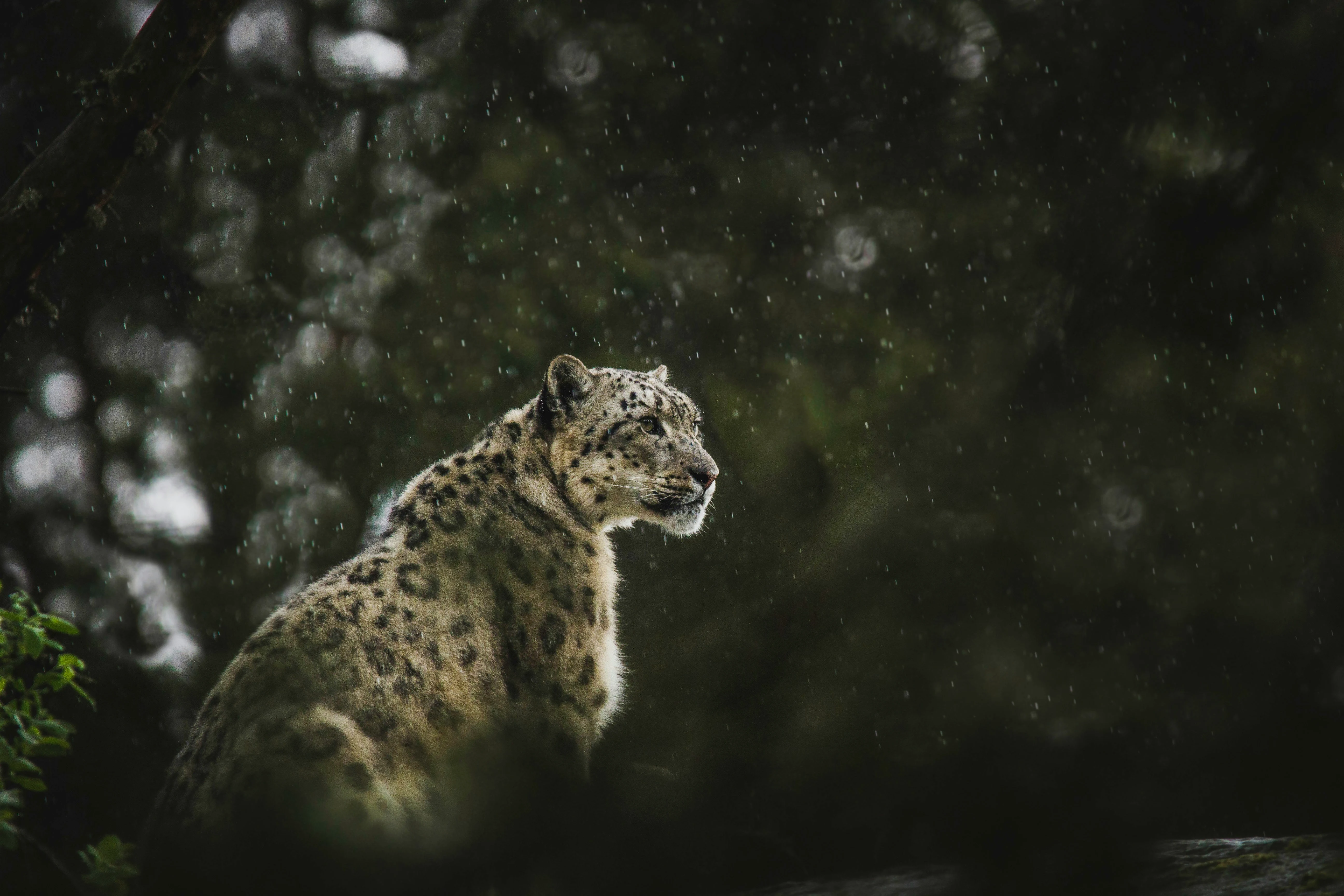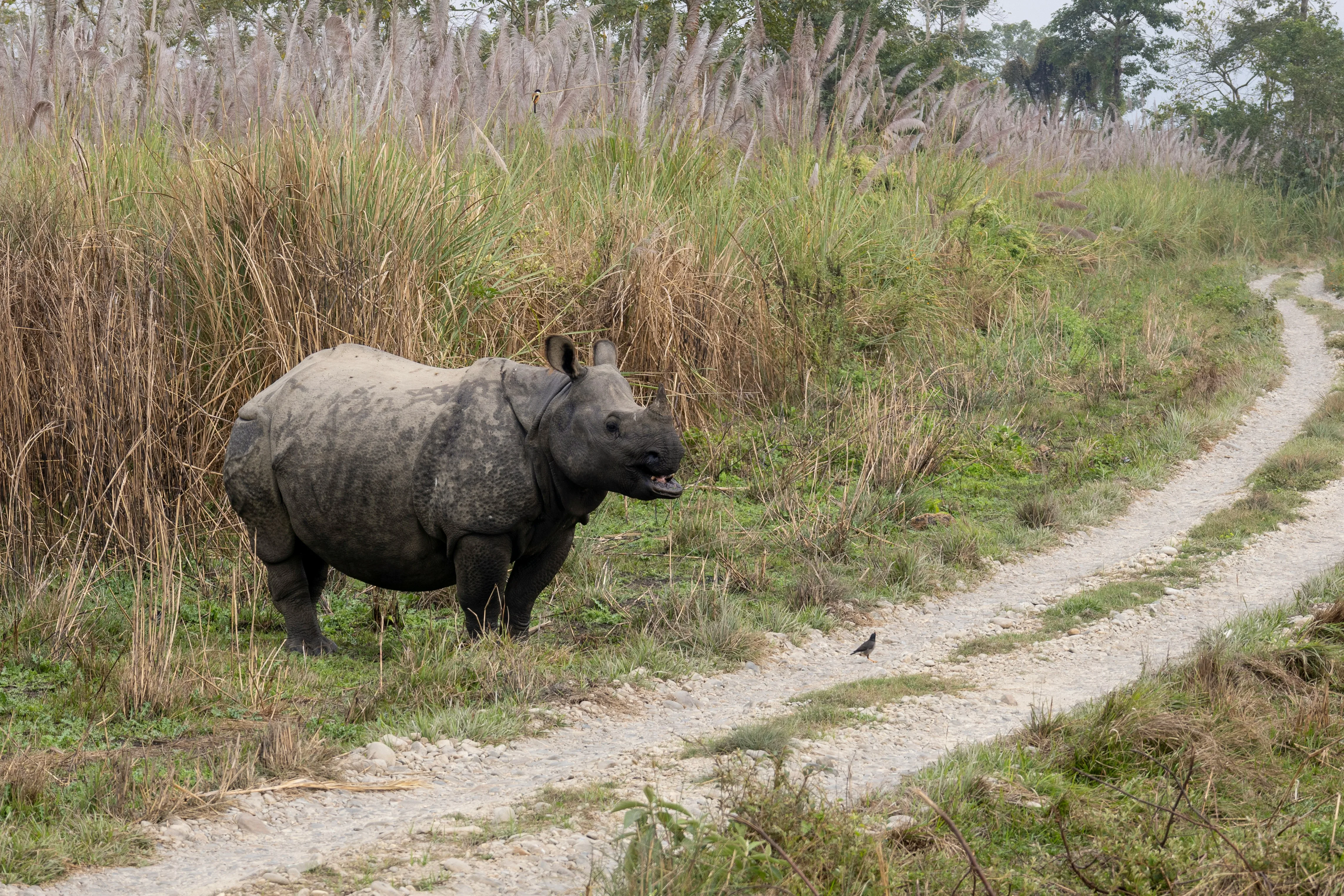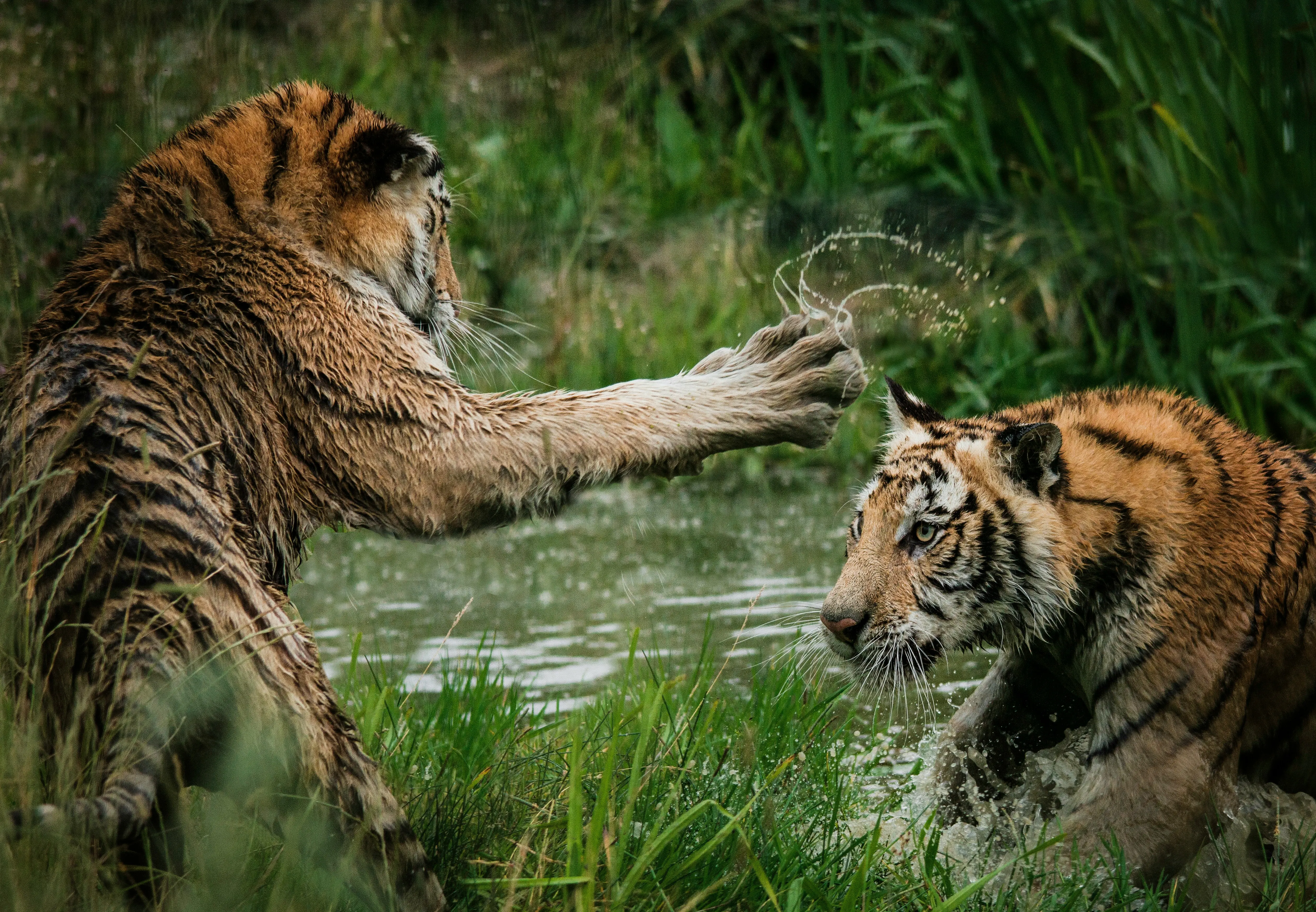10 Endangered Animals in India : That Must be Saved
Endangered Animals in India | Endangered Wildlife Species
Endangered Animals in India With Photos: Welcome to an expedition into the depths of India's extraordinary biodiversity and the pressing imperative to preserve its most vulnerable wildlife species. In a landscape ranging from the regal Bengal tiger to the elusive snow leopard, India's varied ecosystems host a plethora of iconic creatures teetering on the brink of extinction. Embark with us on a voyage through the epicentre of conservation endeavours dedicated to shielding these magnificent beings and the places they call home. Explore the top 10 endangered species in India, complete with captivating images, and discover which animal reigns as the most protected in this diverse nation.
India is renowned for its rich biodiversity, harbouring an array of unique flora and fauna. However, amidst the beauty lies a grim reality—numerous species are on the brink of extinction due to various threats. Here, we delve into the top 10 endangered species in India with pictures, and images shedding light on their plight and conservation efforts.
List of Endangered Animals in India
The rise in the number of highly endangered animal species in India is a big problem when we talk about the amazing variety of life in any area. India has quite a few animals that are in danger of disappearing. Here are some of them which are endangered in India.
- Bengal Tiger
- Indian Rhinoceros
- Asiatic Lion
- Snow Leopard
- Red Panda
- Great Indian Bustard
- Gangetic Dolphin
- Lion-Tailed Macaque
- Nilgiri Tahr
- Namdapha Flying Squirrel
- Malabar Large-Spotted Civet
- Slender-Billed Vulture
- Indian Elephant
- Himalayan Brown Bear
- Kashmir Stag
1. The Asiatic Lion – Pride of Gujarat
In the sun-drenched plains of Gujarat's Gir National Park, the Asiatic lion reigns supreme, a living testament to India's cultural heritage. Yet, with dwindling habitat and escalating human-wildlife conflict, its future hangs in the balance. Through concerted conservation efforts, we endeavour to secure the survival of this majestic species and foster harmonious coexistence with local communities.
The beautiful Asiatic lion is in big trouble. It's dealing with a bunch of problems like losing its home, being hunted, and getting into fights with people. Can you believe there are only around 600 Asiatic lions left in the wild? Most of them hang out in Gir National Park in Gujarat, India.
Luckily, in India, there are laws to protect these lions. There's one called the Wildlife Protection Act of 1972, which says no one can hunt, poach, or sell parts of the lion. But even with these rules, some people still go after lions to get their skins, bones, and other stuff, which they sell secretly for a lot of money.
Reasons for endangerment:
- Habitat loss and fragmentation due to agriculture and development
- Poaching for skin and body parts
Protections taken:
- Establishment of protected areas and buffer zones
- Community-based conservation initiatives and livelihood support
- Research and monitoring to understand lion's behaviour and mitigate human-lion conflict
2. The Lion-Tailed Macaque – Guardians of the Western Ghats
Amidst the mist-shrouded peaks of the Western Ghats, the lion-tailed macaque reigns supreme, adorned with its regal mane of ebony fur. Yet, this emblem of India's biodiversity faces escalating threats from habitat loss and human encroachment. Through community-driven conservation endeavours, we endeavour to protect the ancestral forests that sustain these arboreal monarchs.
The lion-tailed macaque, a primate species native to the Western Ghats mountain range in southern India, stands out as one of the planet's most endangered primates. Its population is estimated to hover around 2,500 individuals, highlighting the critical need for conservation efforts to safeguard its existence.
Reasons for endangerment:
- Deforestation and fragmentation of Western Ghats habitats
- Human-wildlife conflict
Protections taken:
- Establishment of protected areas and corridors for wildlife movement
- Promotion of sustainable land-use practices
- Collaborative initiatives with local communities for habitat conservation
3. The Namdapha Flying Squirrel – A Jewel of the Forest
Nestled within the verdant forests of Namdapha National Park in Arunachal Pradesh, the Namdapha flying squirrel captivates with its graceful aerial feats. This arboreal marvel, with its velvety fur and delicate wings, symbolizes the fragile balance of life in the canopy. However, habitat loss and poaching threaten its existence, spurring dedicated conservation initiatives to ensure its survival.
The Namdapha flying squirrel, a remarkable species inhabiting the Namdapha National Park in Arunachal Pradesh, India, boasts impressive dimensions with a body length stretching up to 36 centimetres and a wingspan reaching 70 centimetres. However, its existence is imperilled by the twin threats of habitat loss and degradation, compounded by hunting and poaching activities. Classified as endangered on the IUCN Red List, this species faces a precarious future, with its population dwindling to fewer than 2,500 individuals. Conservation efforts are underway, focusing on safeguarding its habitat and implementing various measures to ensure its survival.
Efforts to conserve the Namdapha flying squirrel are intensifying, driven by the urgent need to protect this vulnerable species. The preservation of its habitat and the enforcement of stringent conservation measures are pivotal in mitigating the threats it faces. By addressing the challenges posed by habitat loss, hunting, and poaching, stakeholders endeavour to secure a brighter future for the Namdapha flying squirrel and uphold the delicate balance of biodiversity within its native ecosystem.
Reasons for endangerment:
- Habitat loss and degradation due to deforestation
- Hunting and poaching for fur and meat
Protections taken:
- Establishment of protected areas like Namdapha National Park
- Implementation of conservation measures to protect habitat
- Enforcing laws against hunting and poaching
4. The Gangetic Dolphin – Echoes of the River
Bearing witness to the ebb and flow of the sacred Ganges, the Gangetic dolphin embodies the spirit of India's lifeline. With its sonar-guided navigation and gentle demeanour, this enigmatic creature serves as a poignant reminder of the interconnectedness of river ecosystems. Through concerted conservation actions, we strive to safeguard the future of this beloved aquatic ambassador.
The Ganges river dolphin, characterized as a small to medium-sized dolphin, can reach lengths of up to 2.7 meters (8.9 feet) and weigh up to 170 kilograms (375 pounds). Notably, this dolphin species is blind, depending solely on echolocation to navigate its watery habitat and locate prey. Despite its limitations, it displays remarkable adaptability, albeit as a relatively slow swimmer, with a top speed reaching about 18 kilometres per hour (11 miles per hour).
Reasons for endangerment:
- Habitat degradation and pollution of river systems
- Accidental entanglement in fishing gear
Protections taken:
- Conservation of riverine habitats
- Implementation of measures to reduce pollution and mitigate fishing threats
- Community engagement in dolphin conservation initiatives
5. The Great Indian Bustard – Guardian of the Grasslands
Roaming the vast grasslands of Rajasthan and Gujarat, the great Indian bustard cuts a striking figure against the golden horizon. Despite its majestic presence, this critically endangered bird faces myriad challenges, from habitat destruction to poaching. Yet, through collaborative conservation endeavours, there is hope for the revival of this iconic species and the preservation of its native habitat.
The great Indian bustard, a native species of India, is a strikingly large bird, with males towering up to 1.2 meters in height and weighing as much as 15 kilograms. Despite its impressive stature, this majestic bird faces a dire situation, being classified as critically endangered on the IUCN Red List, with a mere estimated population of fewer than 250 individuals.
- Reasons for endangerment:
- Loss of grassland habitat due to agricultural and industrial development
- Poaching for feathers and meat
Protections taken:
- Creation of protected areas and conservation programs
- Rehabilitation of degraded grasslands
- Community involvement in conservation efforts
6. The Nilgiri Tahr – Sentinel of the Southern Highlands
Perched precariously upon rugged cliffs in the Nilgiri Hills, the Nilgiri tahr commands awe with its sure-footed ascent. As a keystone species in its alpine habitat, this resilient mountain goat faces escalating pressures from habitat degradation and poaching. Through collaborative conservation strategies, we aspire to safeguard the pristine landscapes that harbour these elusive guardians.
Nilgiri tahrs, being herbivores, primarily graze on grasses and herbs. They tend to live in small herds, usually led by a dominant male. Breeding season typically falls between December and January, with females giving birth to one or two offspring after a gestation period of around five months.
The Nilgiri tahr is categorized as an endangered species due to threats such as habitat loss and poaching. To safeguard this species, the Indian government has designated protected areas like Mudumalai National Park and Anamalai Tiger Reserve. Additionally, conservation efforts include educational programs and the active involvement of local communities in protecting the Nilgiri tahr.
Reasons for endangerment:
- Habitat loss due to tourism, agriculture, and infrastructure development
- Illegal poaching for horns and meat
Protections taken:
- Establishment of protected areas and habitat restoration programs
- Enforcement of anti-poaching laws
- Research and monitoring initiatives to track population trends
7. The Red Panda – Jewel of the Eastern Himalayas
In the dense bamboo forests of Sikkim and Arunachal Pradesh, the red panda epitomizes the enchanting allure of India's eastern frontier. With its russet coat and playful antics, this charismatic mammal embodies the essence of wilderness. Yet, rampant deforestation and illegal wildlife trade imperil its future, prompting urgent conservation actions to preserve its dwindling habitat.
Red pandas are usually found chilling in temperate forests, chilling at elevations from 2,200 to 4,800 meters. They're like pros at living in trees, and they've got this super fluffy fur that keeps them cosy in the cold. When it comes to chow time, they're all about that bamboo life, but they also munch on fruit, berries, and even bugs sometimes.
But here's the sad part: red pandas are in trouble. Their homes are disappearing, and people are hunting them, which has caused their numbers to drop a lot in recent years. But in India, there are laws to protect red pandas, and folks are working hard to help them out. They're setting up safe areas where red pandas can hang out without any worries and teaching locals why it's important to keep these cute critters around. It's all about making sure red pandas can keep on being their adorable selves in the wild.
Reasons for endangerment:
- Habitat loss and fragmentation due to deforestation
- Illegal poaching for fur and pet trade
Protections taken:
- Creation of protected areas and wildlife corridors
- Community-based conservation initiatives
- Collaboration with local stakeholders and international organizations
8. The Snow Leopard – Ghost of the Himalayas
Can you believe there are less than 500 snow leopards left in India? Most of them hang out in the Himalayan mountain range. But don't worry, people are working hard to help them out. In India, they're doing a bunch of stuff to protect snow leopards and where they live. They're making sure there are big areas where snow leopards can be safe, and they're trying to connect these areas so the leopards can move around easily. Also, they're teaching people how to live peacefully with snow leopards and making sure nobody hunts them or sells their parts. It's all about making sure these amazing animals can keep on living in the wild where they belong.
In the shadowy recesses of the Himalayan peaks, the snow leopard prowls with unmatched grace, a phantom of the high-altitude realms. Despite its elusive nature, this iconic big cat faces escalating threats from poaching and habitat fragmentation. Through collaborative conservation endeavours, we endeavour to protect the fragile ecosystems that harbour these elusive sentinels.
Reasons for endangerment:
- Poaching for fur, bones, and body parts
- Decline of prey species due to habitat loss and human-wildlife conflict
Protections taken:
- Establishment of protected areas and community-managed reserves
- Implementation of anti-poaching measures and wildlife monitoring programs
- Promotion of alternative livelihoods for communities living in snow leopard habitats
9. The Indian Rhinoceros – Guardian of the Grasslands
Wading through the swaying grasslands of Assam and West Bengal, the Indian rhinoceros cuts a formidable figure, a relic of prehistoric times. Yet, relentless poaching and habitat encroachment threaten its very existence, underscoring the urgent need for conservation action. Through concerted efforts, we strive to secure the future of this iconic megafauna and its vanishing habitat.
The Indian rhinoceros is in a tough spot. It's facing a bunch of problems like losing its home, being hunted, and getting into conflicts with people. Can you believe there are only around 3000 Indian rhinos left in the wild? Most of them hang out in places like Assam and West Bengal in India.
Luckily, in India, there are laws to protect these rhinos. One of them is called the Wildlife Protection Act of 1972, which says no one can hunt, poach, or sell parts of the rhino. But even with these rules, some people still go after rhinos to get their horns, which they sell secretly for a lot of money.
Reasons for endangerment:
- Poaching for horn and other body parts
- Habitat loss and fragmentation due to agriculture and infrastructure development
Protections taken:
- Creation of rhino sanctuaries and anti-poaching units
- Translocation and reintroduction programs to establish new populations
- Collaboration with local communities for habitat conservation and human-wildlife coexistence
10. The Bengal Tiger – Jewel of the Jungle
Roaming the verdant jungles of India, the Bengal tiger commands reverence as the undisputed apex predator, a symbol of strength and resilience. However, rampant poaching and habitat destruction imperil its survival, highlighting the imperative for conservation intervention. Through holistic conservation strategies, we aspire to protect the charismatic tiger and its biodiverse habitat for generations to come.
The majestic Bengal tiger confronts a multitude of challenges jeopardizing its existence, notably habitat loss, poaching, and human-wildlife conflict. Shockingly, recent estimates suggest that the wild Bengal tiger population has plummeted to fewer than 2500 individuals, predominantly concentrated in India.
Within India, stringent safeguards are in place to shield the Bengal tiger from harm. Enacted in 1972, the Wildlife Protection Act extends robust protection, prohibiting hunting, poaching, and trafficking of tiger parts. Despite these legislative measures, the peril persists as tigers continue to fall victim to poachers seeking their coveted skins, bones, and other body parts, fetching exorbitant prices on the clandestine market.
Reasons for endangerment:
- Poaching for skins, bones, and other body parts
- Habitat loss and fragmentation due to deforestation and human encroachment
Also read,
Protections taken:
- Establishment of tiger reserves and protected areas
- Implementation of anti-poaching patrols and surveillance
- Community-based conservation initiatives and eco-tourism development
Conclusion:
As we traverse the length and breadth of India's diverse landscapes, we encounter a tapestry of life teetering on the brink of oblivion. From the mist-shrouded forests of the Western Ghats to the snow-capped peaks of the Himalayas, each ecosystem harbours a wealth of biodiversity in peril. Yet, amidst the looming shadows of extinction, there glimmers a ray of hope – the collective resolve to safeguard our natural heritage for generations to come. Together, let us embark on a journey of conservation and discovery, as we strive to preserve India's most endangered wildlife for posterity.





















আজকের আইটির নীতিমালা মেনে কমেন্ট করুন। প্রতিটি কমেন্ট রিভিউ করা হয়।
comment url